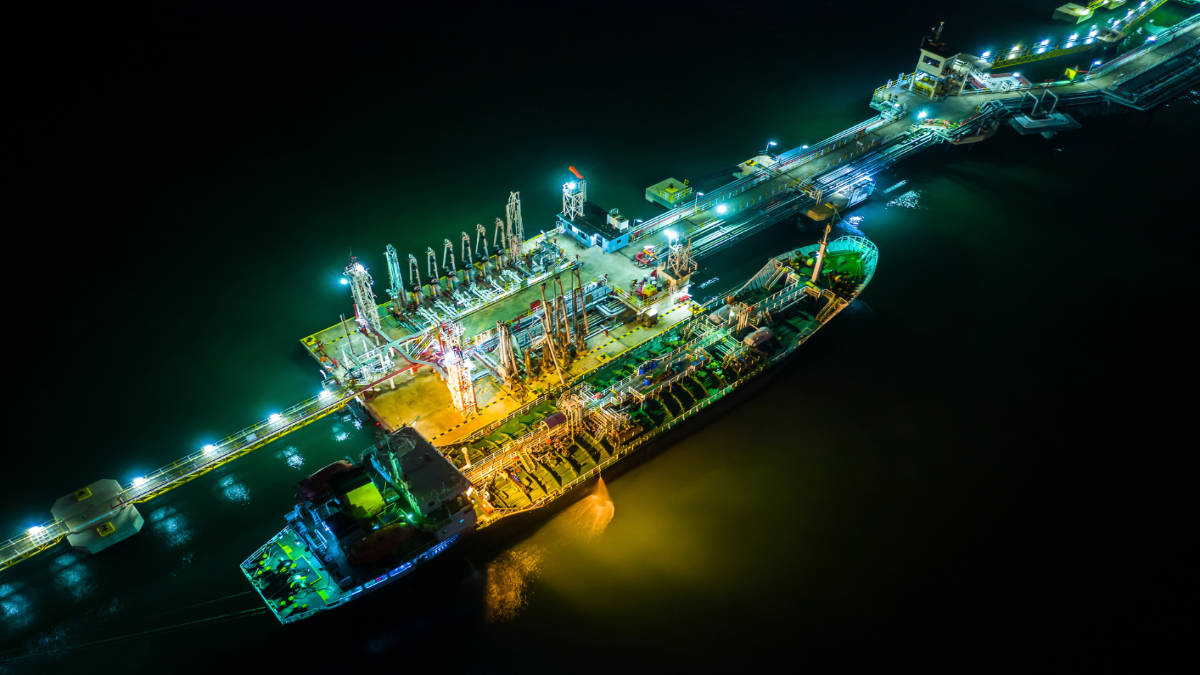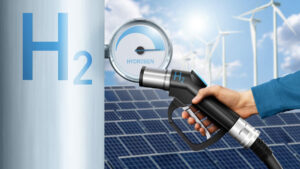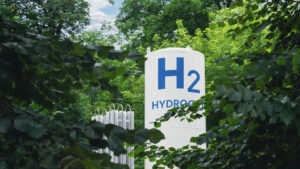ASX Green Energy stocks: The world’s first liquefied hydrogen carrier graces Australian shores

Pic: Getty
The world’s first liquefied hydrogen carrier – the Suiso Frontier – has arrived on Australian shores.
In a nod to the success of the Hydrogen Energy Supply Chain Project (HESCP), the ship docked into Victoria’s port of Hastings yesterday, signalling that the dawn of the ‘hydrogen age’ is well and truly upon us.
The Hydrogen Energy Supply Chain Project is Australia’s most advanced hydrogen project and the first project in the world to make, liquefy, and transport liquid hydrogen by sea to an international market.
Next week, the Suiso Frontier will make the return journey to Kobe, Japan with a load of liquefied hydrogen from Australia’s Latrobe Valley in Victoria.
Around 225,000 tonnes of carbon neutral liquefied hydrogen (LH2) produced by HESC in a commercial phase will contribute to reducing global CO2 emissions by some 1.8 million tonnes per year (equivalent to the emission of about 350,000 petrol-driven cars).
It will also provide valuable infrastructure for other hydrogen projects in the region.
An estimated 99.999% pure hydrogen has been produced from Latrobe Valley coal and biomass via gasification during the Pilot Project to date, before it was trucked to Hastings, cooled to -253 degrees and subsequently liquified to less than 800 times its gaseous volume to create highly valuable liquefied hydrogen.
Over the next two years, the project partners will undertake extensive research and development of the technical and operational requirements for a commercial-scale project.
ASX green energy news
Hazer commercial demonstration Project update
A defect identified in a reactor vessel manufactured in China for the Hazer Commercial Demonstration Project (CDP) Project back in December 2021 has since been reviewed, with plans now that a new reactor vessel will be shipped to Australia by July 2022.
Although six months later than originally planned, this means production of hydrogen and graphite is set to begin before the end of 2022, with final project costs reaching the top end of its previously indicated range of $23 – $25 million.
Hazer (ASX:HZR) CEO Geoff Ward said: “Amongst other changes, we have reduced the size of the proposed forging and will now manufacture the reactor in two sections which will be welded together in final fitting.
“This reduction in forging length will reduce the risk of the manufacturing defect encountered in the first manufacture being repeated,” he said.
Innovative, first-of-kind projects are challenging, particularly in the current operating environment.
“While it has been very disappointing to all to hit this issue so late in the Project, we are continuing to take all of the engineering and operational learnings gained from these challenges to improve our program going forward.”
The Hazer CDP is the first commercial scale demonstration of the Hazer Process, a novel method to produce low emissions hydrogen from a renewable form of methane.
This process uses methane as a feedstock to produce hydrogen, without producing CO2 in the reaction process, instead capturing the carbon the feedstock as solid graphite.
Genex Power begins underground works at Kidston Hydro Project
Genex Powers’ (ASX:GNX) is developing the flagship Kidston Clean Energy Hub in north Queensland, which will integrate large-scale solar generation with pumped storage hydro and includes two projects – the operating 50MW stage-1 Solar Project and the 250MW Kidston Pumped Storage Hydro project.
Underground works have kicked off at the Kidston Hydro project, with works relating to the Main Access Tunnel (MAT) underway and ahead of contract schedule.
At the same time, GNX announced this morning that the EPC contractor has started underground excavation works for the first major blast for the MAT and following this milestone, tunnelling operations have now been progressing on a 24/7 basis.
Strike continues with approvals at Project Haber
Strike Energy (ASX:STX) says it is continuing to progress environmental and planning approvals required for Project Haber.
The first round of baseline surveys, modelling and technical studies have been completed and Strike’s consultant Strategen JBS&G has started drafting of the key regulatory approval applications ahead of submission.
Project Haber, a 1.4mtpa urea fertiliser production facility in WA’s Midwest region, aims to replace Australia’s reliance on more than $1 billion of fertiliser imports each year.
The company plans on doing this by providing a locally producer, top quality fertiliser that would improve Australian agriculture’s competitiveness and reduce the carbon intensity of Australian farming.
Related Topics

UNLOCK INSIGHTS
Discover the untold stories of emerging ASX stocks.
Daily news and expert analysis, it's free to subscribe.
By proceeding, you confirm you understand that we handle personal information in accordance with our Privacy Policy.








